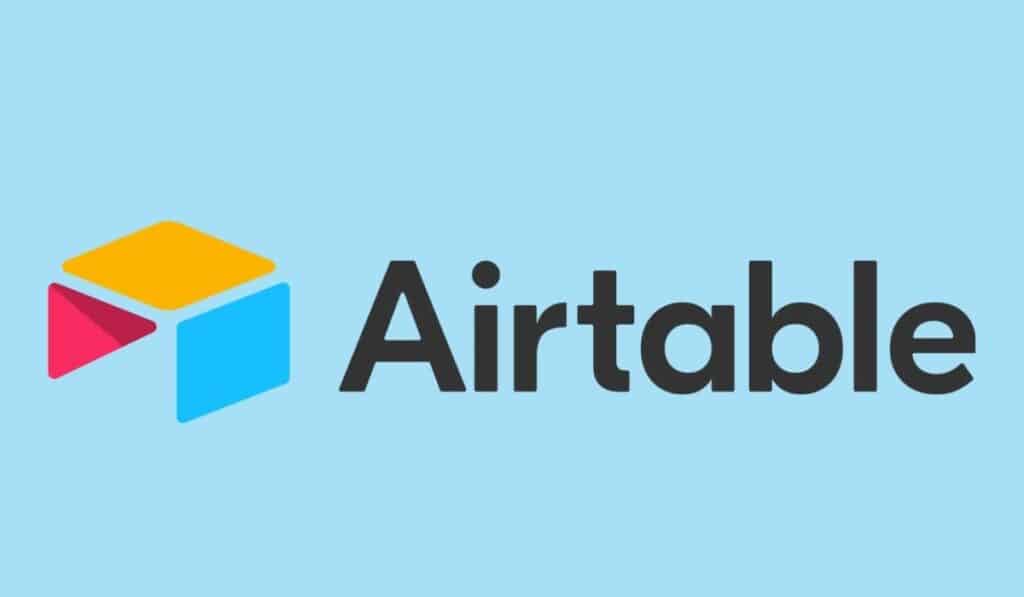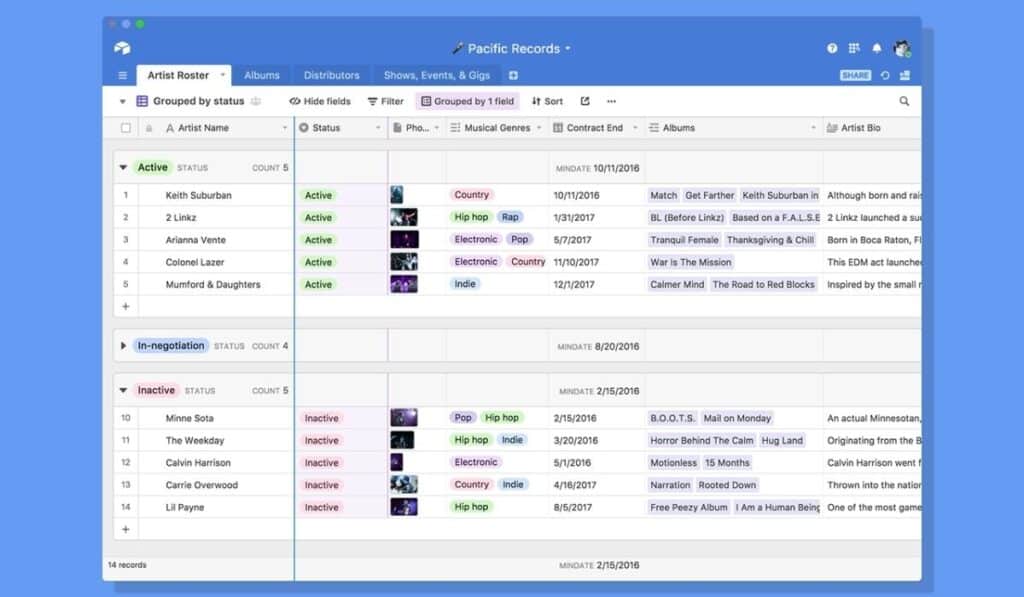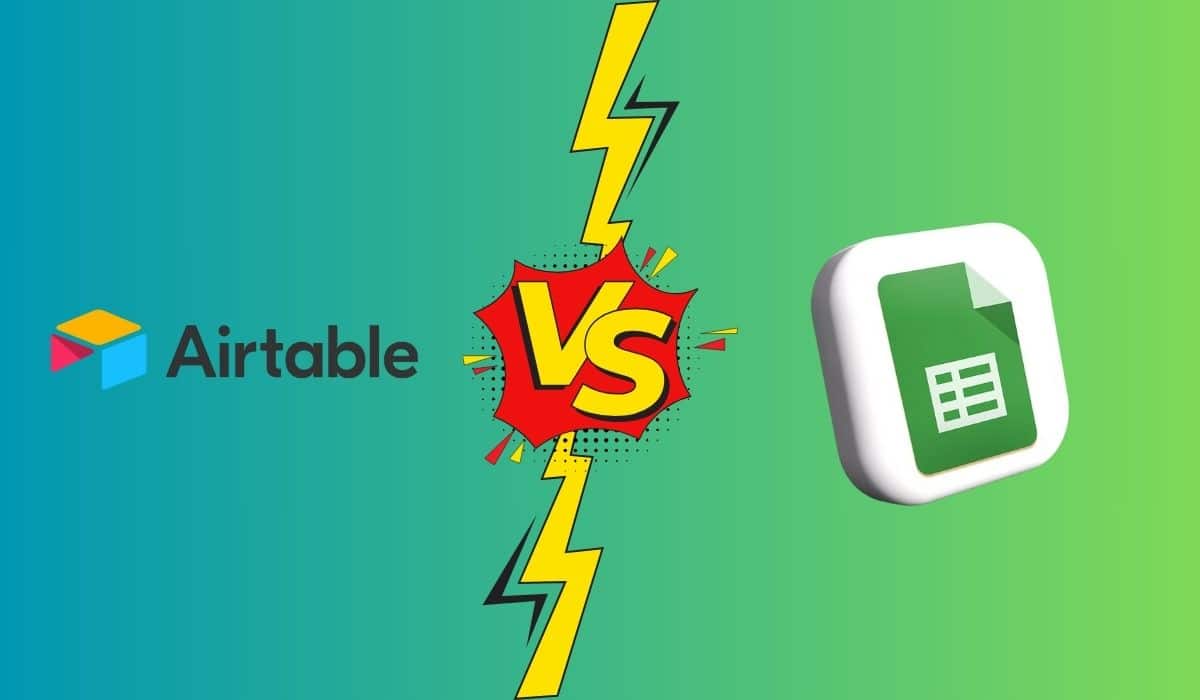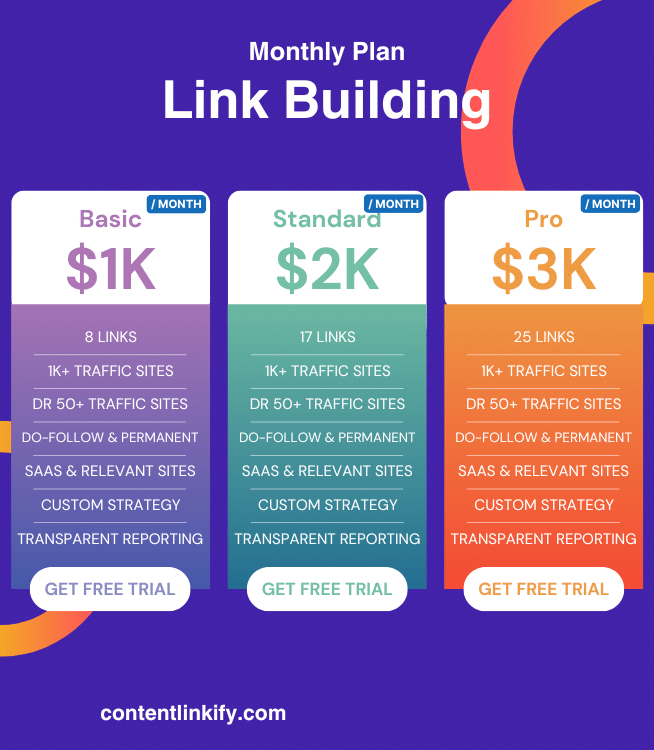Google Sheets is great for simple data tasks. It works well with other Google tools. Airtable is more powerful. It combines spreadsheets with database features. Google Sheets is best for basic needs and small budgets. Airtable is better for complex projects. It costs more but offers advanced tools for business teams in 2025.
Choose the Right Data Tool: Google Sheets vs Airtable in 2025
We all need tools to organize our data. Two big names stand out in 2025: Google Sheets vs Airtable.
Both tools let you work with rows and columns. But they are very different in many ways. Google Sheets has grown from a basic spreadsheet. Airtable has changed what we think database spreadsheet tools can do.
You might be a business owner tracking sales. Or a marketing team planning campaigns. Maybe you’re part of a large company. Either way, picking the right cloud spreadsheet tools matters.
This guide will help you choose. We’ll look at what makes each tool special. We’ll compare prices and features. By the end, you’ll know which one fits your needs best.
The Core Differences: Spreadsheet vs Database-Spreadsheet Hybrid
Google Sheets vs Airtable represents two different approaches to organizing information. Google Sheets follows the classic spreadsheet model we all know. Airtable combines spreadsheet simplicity with database power for more complex data relationships.
Google Sheets: The Familiar Spreadsheet Experience

Google Sheets works like most spreadsheets you’ve used before. It uses a simple grid of rows and columns. If you’ve used Excel, you’ll feel right at home.
Most people can start using it right away. No special training is needed. It’s great for quick data work. You can create, format, and change data easily.
Airtable: The Database Revolution with a Spreadsheet Face

Airtable looks like a spreadsheet but works like a database. As a database spreadsheet hybrid, it still shows data in rows and columns. But it can do much more with how data connects.
Each Airtable “base” can have many tables that work together. You can link records across tables. This creates a web of connected data. You don’t need to know SQL or database code to use it.
User Interface and Experience
How a tool looks and feels affects how easy it is to use. Any spreadsheet comparison should consider the user interface first. Google Sheets offers a clean, familiar interface that most people understand right away. Airtable provides multiple ways to view and work with the same data.
Google Sheets: Clean, Familiar, and Continuously Improving

Google Sheets has a clean, simple look. The 2025 version adds smart features. It can suggest formulas and formats based on your data.
It follows the classic spreadsheet design. Tabs are at the bottom. The formula bar is at the top. Tools are where you expect them to be.
Recent updates make it work better on phones and tablets. Common tasks now take fewer clicks to complete.
Airtable: Customizable Views for Different Perspectives

Airtable shines by showing your data in many ways. The Grid view shows regular rows and columns like a spreadsheet. The Kanban view displays cards in columns for project tracking. Calendar view puts events in a calendar format. Gallery view focuses on images in your data. Gantt view creates project timelines with visual progress. Form view offers custom forms for entering new data.
The 2025 version adds more view types for specific jobs. Teams can see the same data in ways that make sense for them.
You can hide fields you don’t need. You can color-code records. Your changes won’t affect what others see. There’s more to learn at first. But the extra features are worth it.
Collaboration Features
Teamwork is essential for most projects today. Both tools let multiple people work on the same file at once. The way they handle comments, permissions, and workflow is quite different.
Google Sheets: Real-time Collaboration Pioneer
Google Sheets changed how we work together on spreadsheets. In 2025, it’s still a leader. Many people can edit the same file at once. You can see who’s making changes in real time.
The comment system lets you discuss specific cells. You control who can edit, comment, or just view your file. Version history tracks all changes made.
Google Meet now works right inside your spreadsheet. The @mention feature now suggests helpful information. It does more than just tag people.
Airtable: Collaboration with Context and Workflow Integration
Airtable vs Google Sheets shows different approaches to team collaboration. Airtable focuses on structured teamwork. It has real-time editing like Google Sheets. But it also helps teams follow specific work processes.
Comments attach to full records, not just cells. This makes discussions more organized. You can set permissions at many levels. Control who sees or changes each type of data.
The 2025 version added “Workflow Views.” These guide team members through steps. They help teams follow the same process every time.
Related: 12 Best Wayback Machine Alternatives to Browse Archived Websites
Data Analysis Capabilities
Making sense of your data is why you use these tools in the first place. Both platforms offer ways to run calculations and create insights. Their approaches to formulas, functions, and data relationships are quite different.
Google Sheets: Formulas, Functions, and Integrated AI Analysis
Google Workspace tools like Google Sheets have many formulas and functions. They range from simple math to complex stats. Excel users will know most of the formulas already.
The 2025 version added new data tools. It has better pivot tables that are easier to use. Smart tools can find and fix data problems automatically. The AI “Explore” feature makes charts for you without extra work. There’s better connection to BigQuery for big data sets. Natural language search lets you type things like “Show me sales by month.”
These tools make data analysis easy. You don’t need special training to use them.
Airtable: Relational Analysis and Custom Computational Fields
Airtable’s strength is working with connected data. It can run calculations across linked tables. This makes complex analysis simpler than in regular spreadsheets.
Formula fields can use data from linked records. This makes cross-table math easy. Airtable has most standard functions. It explains them better with built-in help.
The 2025 version added more analysis tools. It has better math across linked records. There are new tools to build custom dashboards. AI features help write formulas from plain English. Smart alerts can spot unusual patterns in your data.
Airtable may have fewer functions than Google Sheets. But its design often makes complex work easier.
Automation and Integration
Modern work requires tools that talk to each other. Both Google Sheets and Airtable connect with other apps and services. Spreadsheet automation features can save you hours of manual work each week.
Google Sheets: Robust Ecosystem Integration
Google Sheets works great with other Google tools. It connects smoothly with Gmail, Drive, Forms, and Docs. The 2025 version made these connections even better.
For outside tools, Google Sheets offers many options. It connects to thousands of apps through Google Workspace. Google Apps Script lets you create custom coding solutions. Zapier and Make provide no-code automation options. API access is available for developers who need it.
The 2025 version added better triggers for automation. Now it’s easier to build workflows without writing code.
Airtable: Built for Integration and Workflow Automation
Airtable was built with automation in mind. The Automations feature helps create complex workflows. These can start from data changes, time events, or outside triggers.
Airtable offers many integration options. It has visual tools to build complex workflows. Hundreds of pre-built blocks connect to popular apps. Webhooks let you connect with any service that has an API. A REST API gives custom access to your data. Script blocks allow for custom JavaScript code.
The 2025 updates make these tools easier for beginners. They also add more options for advanced users.
Mobile Experience
Working on the go is a must in today’s business world. Cloud spreadsheet tools need to work well on all devices. Both tools offer mobile apps for iOS and Android. They take different approaches to what features work best on smaller screens.
Google Sheets: Consistent Cross-Platform Functionality
Google Sheets has good mobile apps for iOS and Android. They keep most features from the desktop version. But they’re designed for smaller screens.
The mobile app has several key features. You get offline editing that syncs when you’re back online. Full formula and formatting options are available. Comment and team features work just like on desktop. The views are specially designed for mobile screens.
The 2025 mobile app works better with large spreadsheets. It’s faster and easier to navigate big data sets.
Airtable: Function-Focused Mobile Approach
Airtable’s mobile app focuses on key tasks. It doesn’t try to copy everything from the desktop. It makes it easy to view and update records on the go.
The app has several standout mobile features. You can scan barcodes or QR codes to find records quickly. Direct camera access lets you add photos to records. Location filters help find nearby records. Forms are designed to work well on phones.
The 2025 mobile app works much better offline. You can do more work without an internet connection.
Scaling and Performance
As your data grows, your tools need to keep up. Both platforms have limits on how much data they can handle. Performance can slow down as you approach these limits.
Google Sheets: Improving but Still Limited for Massive Datasets
Google Sheets has some limits with very large data sets. Current limits are:
- 10 million cells per spreadsheet
- 200 people editing at once
- 5 million formulas per spreadsheet
These limits are fine for most uses. But they can be a problem for data-heavy work. Large spreadsheets can slow down. This is most true with complex formulas.
The 2025 version is faster than before. But it still has some limits with very big data sets.
Airtable: Built to Scale with Enterprise Data Needs
Airtable handles larger data sets better. It has limits too. But they’re higher, and performance stays good as you approach them.
Airtable’s current limits include:
- 100,000 records per base (on higher plans)
- 100,000 records per table
- 1,000 fields per table
- Up to 50GB of attachments (on Enterprise plans)
It runs smoother with large data because of its database design. Views that show only parts of your data help keep things fast.
Pricing and Value Proposition
Cost is always an important factor when choosing tools. When comparing Google Sheets vs Airtable, pricing structures differ significantly. Google Sheets offers a generous free tier with paid options for businesses. Airtable uses a freemium model with more features at each price level.
Google Sheets: Free with Premium Business Options
Google Sheets has a strong free version. It works for most personal and small business needs. The 2025 pricing is:
- Free: Includes 15GB of storage across Google services
- Google Workspace Business Starter: $6 per user monthly
- Google Workspace Business Standard: $12 per user monthly
- Google Workspace Business Plus: $18 per user monthly
- Enterprise plans: Custom pricing with more features
The value is great, especially if you use other Google tools.
Airtable: Freemium with Substantial Premium Features
Airtable uses a freemium model. Each tier adds important features:
- Free: Up to 1,200 records per base and 2GB storage
- Plus: $10 per seat monthly with 5,000 records per base
- Pro: $20 per seat monthly with 50,000 records per base
- Enterprise: Custom pricing with 100,000+ records per base
The pricing shows that Airtable is a premium tool. The free tier is just a sample. Serious business use needs a paid plan.
Security and Compliance
Keeping your data safe is critical for any business tool. Both platforms offer security features to protect your information. They comply with different standards and regulations for data privacy.
Google Sheets: Enterprise-Grade Security Infrastructure
Google Sheets benefits from Google’s security systems. Key security features include:
- SOC 1/2/3 compliance
- ISO 27001, 27017, 27018 certifications
- GDPR compliance tools
- Vault for data retention
- Data Loss Prevention on higher plans
- Two-factor authentication
- Encryption at rest and in transit
The 2025 updates added better sharing controls. These help companies with strict data rules.
Airtable: Built for Business-Critical Information
Airtable has strong security for business use:
- SOC 2 compliance
- GDPR, CCPA, and HIPAA compliance
- Single Sign-On with major providers
- Role-based access controls
- Field-level security
- Audit logs for security tracking
- Enterprise-grade encryption
Airtable can restrict access at the field level. This helps when some data is sensitive but other data isn’t.
Use Case Recommendations
Different projects need different tools. A proper spreadsheet comparison considers your specific needs. Google Sheets and Airtable each shine in specific situations. Knowing when to use each one will help you work more efficiently.
When to Choose Google Sheets
Google Sheets works best when you need specific features:
- A free or low-cost solution
- Simple data structures
- Lots of calculation formulas
- Google Workspace integration
- A tool everyone knows how to use
- Quick setup without training
When to Choose Airtable
Airtable shines when you need these key features:
- Connected data between different tables
- Multiple ways to view the same data
- Structured workflows for teams
- Custom interfaces for different users
- Advanced automation without coding
- Room to grow as your needs get more complex
Conclusion: Making the Right Choice for Your Needs
Both Google Sheets vs Airtable have their strengths in 2025. Your choice depends on your specific needs.
Google Sheets is the simple, familiar option. It works well for basic data tasks. The free version offers plenty of features. It’s great for teams on a budget.
Airtable is more powerful but more complex. It bridges spreadsheets and databases. It offers flexible ways to view and work with data. It costs more but delivers premium features for teams.
Many companies use both cloud spreadsheet tools. They use Google Sheets for simple work. They use Airtable for complex projects with structured workflows.
Both platforms keep improving. Whichever you choose will serve you well beyond 2025.
Frequently Asked Questions
Is Google Sheets or Airtable better for beginners?
Google Sheets is better for beginners due to its familiar interface. Most people already understand spreadsheets. Airtable has more features but requires more learning time.
Can I use Airtable for free?
Yes, Airtable has a free plan with up to 1,200 records per base. However, it has limitations on storage (2GB) and lacks premium features needed for serious business use.
Does Google Sheets work offline?
Yes, Google Sheets works offline on both desktop and mobile. Your changes sync automatically when you reconnect to the internet. This works on all devices.
Can Airtable handle more complex data than Google Sheets?
Absolutely. Airtable excels at relational data where information connects across tables. It’s better for complex projects, while Google Sheets works best for flat data.
Which tool integrates better with other apps?
Both integrate well with other tools. Google Sheets connects seamlessly with Google Workspace. Airtable has more powerful built-in automation features for workflow integration.










